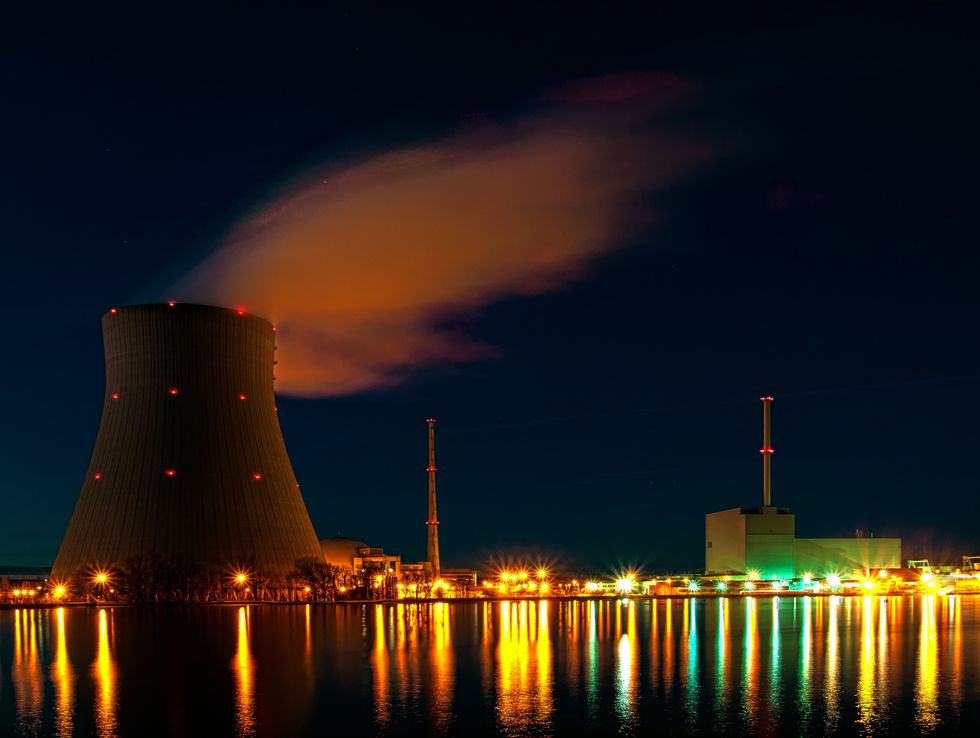Currently, the United States is the greatest producer of nuclear energy, making up about 30% of worldwide nuclear energy production. We have 99 nuclear reactors produced 805-kilowatt hours in 2017, which is 19.7% of our total electrical output. Almost all of this power generation comes from reactors built between 1967 and 1990, and up until 2013, the country had not begun construction on a power plant since 1977. After the Three Mile Island disaster in 1979, much of the construction was postponed or pushed to a later date due to strong opposition and skepticism of the benefit of nuclear energy. Currently, there are plans for lots of new reactors, but no more than 2 will be active before 2021.
But despite all this, the course of nuclear energy is still difficult at best. The world of ever-changing regulations safety regulation poses a difficult problem for construction companies because it often leads to construction stalls, cancelations, design alterations and so on. This spikes up costs exponentially for private companies which makes it uneconomical about nuclear energy for the time being. The only agency to complete the building of a reactor in the past 20 years has been a government corporation, the Tennessee Valley Authority. There may be dozens of new reactors up for licensing by the Nuclear Regulatory Commission, but only four are actually in the process of construction. Two of the projects are in Georgia and two are in South Carolina, but all of the projects have experienced delays and skyrocketing costs. These projects are more than three years late and a few billions of dollars over their budget and pushed Westinghouse, and it's parent, Toshiba, to the brink of financial ruin.
The benefits of nuclear energy are simply undeniable when you look at the figures. Only 99 reactors produce nearly 20 percent of our electricity, while almost 617 coal plants produce nearly 50 percent. That is quite impressive when taken into account that the process of electrical generation for nuclear reactors produces no carbon dioxide and coal produces more than energy source, as well as the fact that burning coal also releases dangerous impurities, such as Mercury, into the atmosphere. Furthermore, nuclear power plants produce energy 91 percent of the time, compared to other sources of clean energy, such as wind. These things are important to consider as we look to the future. Although electrical demand has slowed down for a few years, it is estimated that electrical demand will go up by 5,000 kWh per person. It is estimated by the former governor of New Jersey, and member of the Case Energy Coalition, Christine Todd Whitman that in order to even maintain the 20 percent figure that the United States would have to build anywhere between 25 to 30 new nuclear reactors. This doesn't seem like many, but given the immense amount of time and money that go into building these plants, it is unlikely that we could maintain that level of energy production. Even further, she estimates that in order to meet the goals for greenhouse gas emissions that we'd have to build 187 new nuclear power plants by 2050. This is daunting, given the current state of United States regulations on nuclear energy and the building of power plants but if policies are changed, this could be done.
When looked at from an economic perspective, this could be a great thing for jobs, especially in the South where unemployment and nuclear are typically more common. Whitman says that the building of nuclear power plants can bring in lots of revenue, as much as 430 million for just one reactor. She also projects that the building of the reactor can bring anywhere between 1,200 to 4,000 jobs and manning the plant can bring anywhere between 400 and 700 jobs. This would also bring higher tech jobs as well, as being a nuclear engineer is not something anyone could do, and could possibly expand economic growth in smaller communities.
In early 2015, more than 65 biologists wrote an open letter to Brave New Climate blog about their belief that nuclear energy is the way to the future. They list several reasons as to why they believe, the first is that it saves space. Many other forms of clean and non-renewable energy take up a lot of space in terms of land and this has many effects on local biodiversity levels. Nuclear power plants take up very little space comparatively, but they also take much longer to construct than other methods and this can outweigh the benefits of the compactness. Second, they say that we must embrace a mix of energy sources if we are to reduce the release of carbon dioxide emissions from the burning of fossil fuels. The other sources of clean energy are too variable, or not well enough developed to rely entirely on them. Nuclear energy, however, produces lots more energy and can be built practically anywhere, and not just in windy areas, or sunny areas, or so on. This is why nuclear energy must be considered they argue.
There are serious costs of nuclear energy, however. Like I made clear earlier, the process for establishing a power plant usually takes about twenty years and if we truly want to cut carbon dioxide emissions, nuclear energy won't help us anytime soon. Second, is the radioactive waste that these power plants produce. Nuclear waste has an approximate half-life of 100,000 years, leaving it to just sit and radiate extremely harmful radiation. In order to store this waste, high-tech facilities have to be built to simply hold the waste and stop it from contaminating the life around it.
If handled wrong, the waste could potentially devastate entire ecosystems, communities, and ways of life, and this doesn't include the immense potential costs of health concerns if said waste is handled wrong. Third, is the relative cost of nuclear energy, Amory Lovins has calculated that ten cents invested in nuclear energy could generate 1 kWh of electricity, 1.2-1.7 kWh of wind energy, 6.6-22 kWh of Cogeneration, and 10 kWh of energy efficiency. These calculations call into the question of whether nuclear energy is truly a smart investment or not especially since the developed economies are showing signs of slower economic growth.
Fourth, the estimated reserves of uranium are already small, estimated at 60 years left of uranium. If the whole world switched to nuclear energy there would be about three years left of uranium. While this is incredibly extreme, it shows that this way of energy production wouldn't last forever. Lastly, the mining and building of nuclear power plants can bring lots of damage to ecosystems as the erection of mining sites and plants not only increases carbon dioxide emissions but also destroys local environments for a long time. As the world runs out of more and more uranium, the costs associated with building and mining go up and more and more mining operations will have to be built, which threatens ecosystems everywhere.
These concerns don't necessarily count out nuclear energy, they just necessitate further research and further consideration of the trade-offs present. On one side, they provide a strong way to produce lots and lots of energy, but they also bring lots of hidden costs and concerns. These concerns are very different than the concerns brought on by fossil fuels, which may be part of the reason why people remain afraid of nuclear energy.
But, however shocking, nuclear energy is the least deadly form of energy per kWh, even beating out wind power, a study found. This gives us a lot to consider as we look to the future, but I think it is safe to say, that despite the concerns, that nuclear energy has the potential to be a great addition to the American economy and may help us stay valid as we move into the new global world. Research is still needed, and policies need to be changed as new research is done, but there is a strong possibility that our future holds nuclear energy.


















